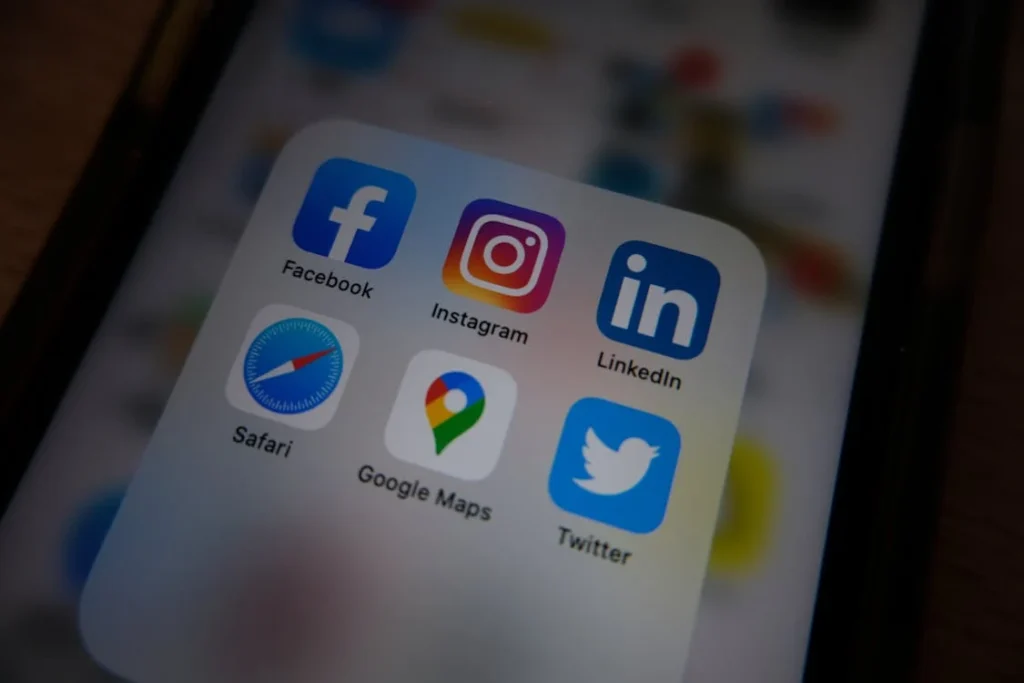Businesses spend over $200 billion annually on digital advertising, with Facebook vs Google Ads commanding the lion’s share of this spend. These two platforms offer enormous potential for reaching customers, but deciding between them isn’t always straightforward. With so many options and features, it’s easy to get overwhelmed. But the right choice can transform your business—whether you’re trying to boost foot traffic for a local shop or scale an online audience.
In this blog, we’ll take a deep dive into the real differences between Facebook vs Google Ads. You’ll learn about what each platform does best and which one might be the smarter choice for your business goals.
The Key Difference of Facebook vs Google Ads: Intent vs Discovery
Before diving into the details, it’s important to understand the fundamental difference between Google Ads and Facebook Ads. The primary distinction comes down to intent versus discovery.
Google Ads: Capturing Intent
Google Ads operates on the premise of intent-based marketing. When people search on Google, they are actively looking for something—whether it’s information, a product, or a service. Google Ads allows businesses to capitalize on this by showing ads to users who are searching for specific terms related to your product or service.
This gives you the opportunity to:
- Target customers when they are ready to buy. If someone searches for “plumber near me,” there’s a good chance they need one right now.
- Control costs with pay-per-click (PPC) bidding. You only pay when someone clicks on your ad.
- Show up at the top of search results, giving your business visibility even if you’re not ranking organically yet.
In short, Google Ads is ideal if you’re trying to catch people at the exact moment they are ready to make a decision.
Facebook Ads: Focusing on Discovery
The Facebook Ads, on the other hand, is built around the idea of discovery. Also, Facebook users generally aren’t searching for a specific service or product. Instead, they’re browsing their feed, checking in on friends, or consuming content. Facebook Ads show up in the mix, helping businesses capture the attention of potential customers who might not be actively searching for what they offer but could be interested based on their behavior and demographics.
This discovery-based approach works well if you want to:
- Generate awareness and interest among people who might not be familiar with your brand.
- Use highly targeted audience settings based on demographics, behaviors, or interests. Facebook knows an astounding amount about its users, making it possible to refine your audience in ways that other platforms can’t.
- Create visually engaging ads. With Facebook Ads, you can incorporate images, video, carousels, and more—making your ad stand out in a busy feed.
Targeting Capabilities Facebook vs Google Ads : Precision or Breadth?
One of the strongest features of both platforms is their targeting ability. But the way you reach your audience varies greatly between Facebook vs Google Ads.

Google Ads: Keywords as King
Google’s main targeting method revolves around keywords. You choose specific words or phrases that are relevant to your business, and Google shows your ad when people search for those terms. You can adjust these keywords to target very specific or broader audiences depending on your goals.
Some key features include:
- Search-based targeting: Ads are shown based on the words users type into the search engine.
- Keyword match types: These include broad match, phrase match, and exact match, allowing you to control how closely searches need to align with your chosen keywords.
- Negative keywords: This feature helps you avoid irrelevant clicks by telling Google not to show your ad for certain search terms.
Google Ads’ precision makes it particularly useful for niche markets or businesses looking to attract people who are actively seeking specific products or services.
Facebook Ads: Laser-Focused Audiences
Facebook Ads, on the other hand, allows advertisers to target based on user demographics, interests, behaviors, and even life events. It’s perfect for businesses looking to raise awareness, promote brand loyalty, or introduce a new product.
Notable targeting features include:
- Custom Audiences: You can upload your own customer list or track website visitors with a Facebook Pixel.
- Lookalike Audiences: Facebook can find new potential customers by analyzing the behaviors and interests of your current audience and finding people who share similar traits.
- Demographic and interest targeting: You can zero in on users based on age, location, hobbies, and even specific activities like shopping behaviors or travel plans.
If you’re trying to reach new customers who might not know they need your product yet, Facebook’s deep insights into its users allow you to narrow down your audience like few other platforms can.

Cost and ROI For Facebook vs Google Ads: How Far Does Your Budget Go?
The cost of advertising is often one of the top concerns for small to medium businesses. While both platforms offer flexible budgets, their pricing structures and potential ROI can be very different.
Google Ads: Pay-Per-Click Precision
Google Ads operates primarily on a pay-per-click (PPC) model. This means that you only pay when someone clicks on your ad. The actual cost per click (CPC) can vary widely depending on the industry and competition. For instance, the average CPC for legal services can be significantly higher than for a local restaurant.
Some factors that influence the cost of Google Ads include:
- Quality Score: Google rewards high-quality, relevant ads with a lower CPC.
- Competition: The more businesses bidding on a keyword, the higher the cost.
- Ad Rank: Your position on the search results page depends on your bid and the relevance of your ad to the searcher’s query.
If your business relies on people searching for specific services or products, Google Ads can offer an excellent return on investment (ROI)—as long as you’re managing your campaigns carefully.
Facebook Ads: Budget Flexibility
So, Facebook Ads generally have a lower CPC than Google Ads, but the return on investment (ROI) can vary depending on your goal. Facebook also offers several bidding options, including pay-per-click and pay-per-impression, giving businesses flexibility based on their budget and goals.
Some benefits of Facebook Ads’ pricing include:
- Lower initial costs: You can run successful Facebook Ads campaigns with a lower budget than Google Ads in many cases.
- Cost-effective for awareness: Facebook’s CPM (cost per thousand impressions) can be highly efficient for building brand awareness.
- Ad fatigue: However, it’s important to refresh your ads often. Because users scroll through their feeds quickly, the same ad can become ineffective after a few views.
For businesses that are new to digital advertising or have a smaller budget, Facebook Ads offer a flexible and cost-effective option, particularly when targeting a highly specific audience.

Ad Formats: Which Platform Gives You More Creative Freedom?
The way your ads look can make a big difference in how they perform. Facebook vs Google Ads offer a variety of formats, but their strengths lie in different areas.
Google Ads: Text and Search-Driven
Google Ads are primarily text-based, especially for search campaigns. These ads show up at the top of Google’s search results, making them highly visible to users actively searching for specific products or services.
Google also offers display ads, which can include images and appear across its network of partnered websites. However, the most common Google Ads are simple and focused on delivering relevant information quickly.
If you prefer a straightforward, text-driven approach to your advertising, Google Ads gives you an effective, no-frills option.
Facebook Ads: Visual Storytelling
Facebook Ads are far more visually engaging, allowing businesses to tell stories through images, videos, carousels, and slideshows. This visual approach gives businesses more creative freedom to grab users’ attention while they scroll through their feed.
- Carousel Ads: Showcase multiple products or tell a story with swipeable images or videos.
- Video Ads: Facebook’s auto-play feature grabs users’ attention quickly.
- Sponsored Posts: Promote a post you’ve already shared to reach a wider audience.
For brands with a strong visual identity or products that benefit from being seen in action, Facebook Ads offer a creative outlet that can lead to high engagement rates.

Final Thoughts: Facebook vs Google Ads
When deciding between Facebook vs Google Ads, the best choice depends on your business goals. If you’re aiming to capture customers who are actively searching for your products or services, Google Ads is likely your best bet. Its precision targeting and intent-based approach allow you to reach people ready to make a decision.
On the other hand, if you want to raise brand awareness, engage with a specific audience, or show off visually appealing products, Facebook Ads may be the right platform for you. Its discovery-based strategy allows you to get creative and reach potential customers who might not even know they need what you’re offering.
At Ard Industry, we specialize in helping businesses like yours navigate both platforms. Whether you’re looking for local SEO support, social media engagement, or full digital marketing strategies, our team can help you reach the right audience, grow your visibility, and drive real results.









[…] one centralized dashboard. This feature alone can save your team from the hassle of jumping from Facebook to Instagram, to LinkedIn, and then to Twitter. Instead, they can bulk-schedule content for weeks […]
[…] Ads: Show personalized product recommendations on platforms like Facebook and […]